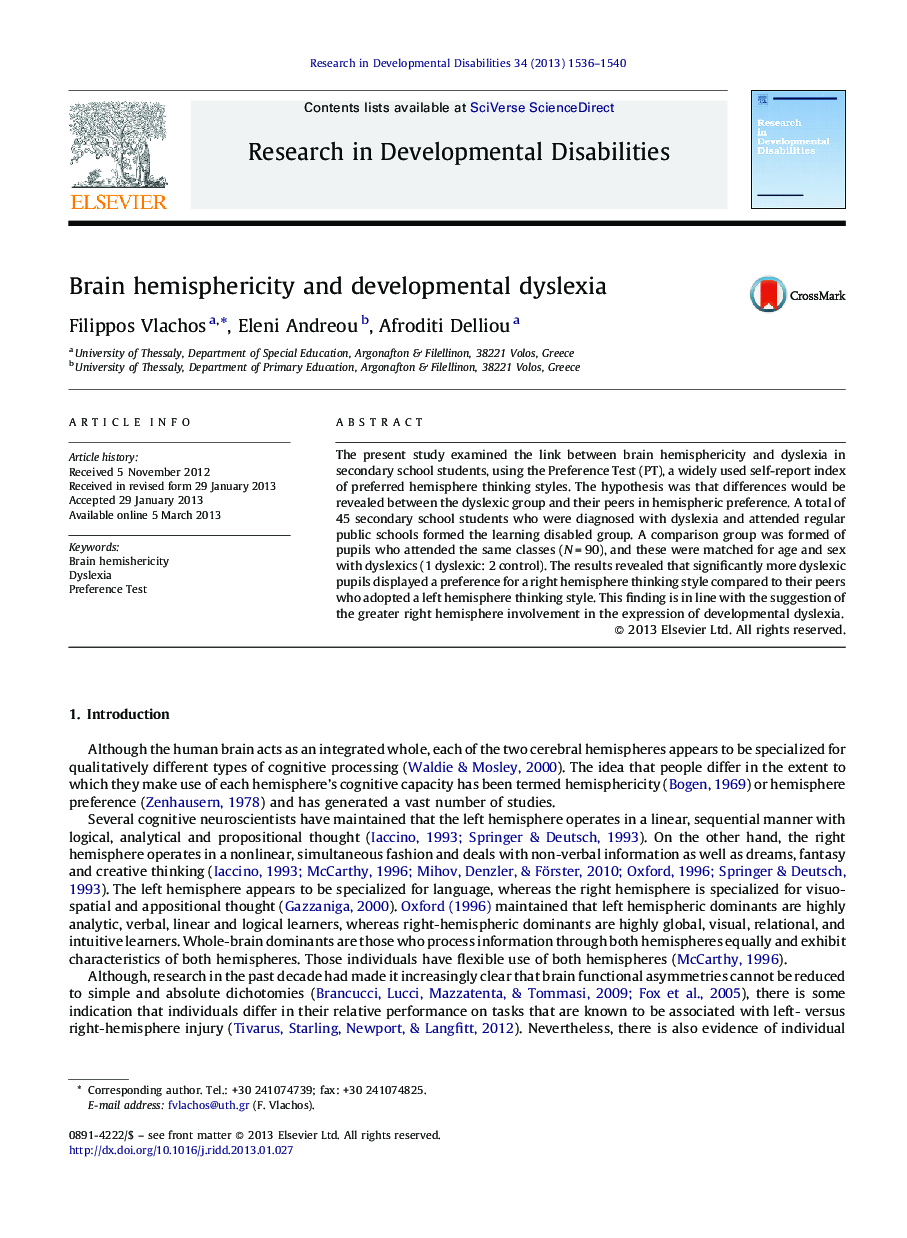| Article ID | Journal | Published Year | Pages | File Type |
|---|---|---|---|---|
| 371462 | Research in Developmental Disabilities | 2013 | 5 Pages |
The present study examined the link between brain hemisphericity and dyslexia in secondary school students, using the Preference Test (PT), a widely used self-report index of preferred hemisphere thinking styles. The hypothesis was that differences would be revealed between the dyslexic group and their peers in hemispheric preference. A total of 45 secondary school students who were diagnosed with dyslexia and attended regular public schools formed the learning disabled group. A comparison group was formed of pupils who attended the same classes (N = 90), and these were matched for age and sex with dyslexics (1 dyslexic: 2 control). The results revealed that significantly more dyslexic pupils displayed a preference for a right hemisphere thinking style compared to their peers who adopted a left hemisphere thinking style. This finding is in line with the suggestion of the greater right hemisphere involvement in the expression of developmental dyslexia.
► Dyslexics and typical readers present differences on hemispheric preference mode. ► Typical readers displayed a preference for a left hemisphere preference. ► An elevated incidence of a right hemisphere thinking style observed among dyslexics.
